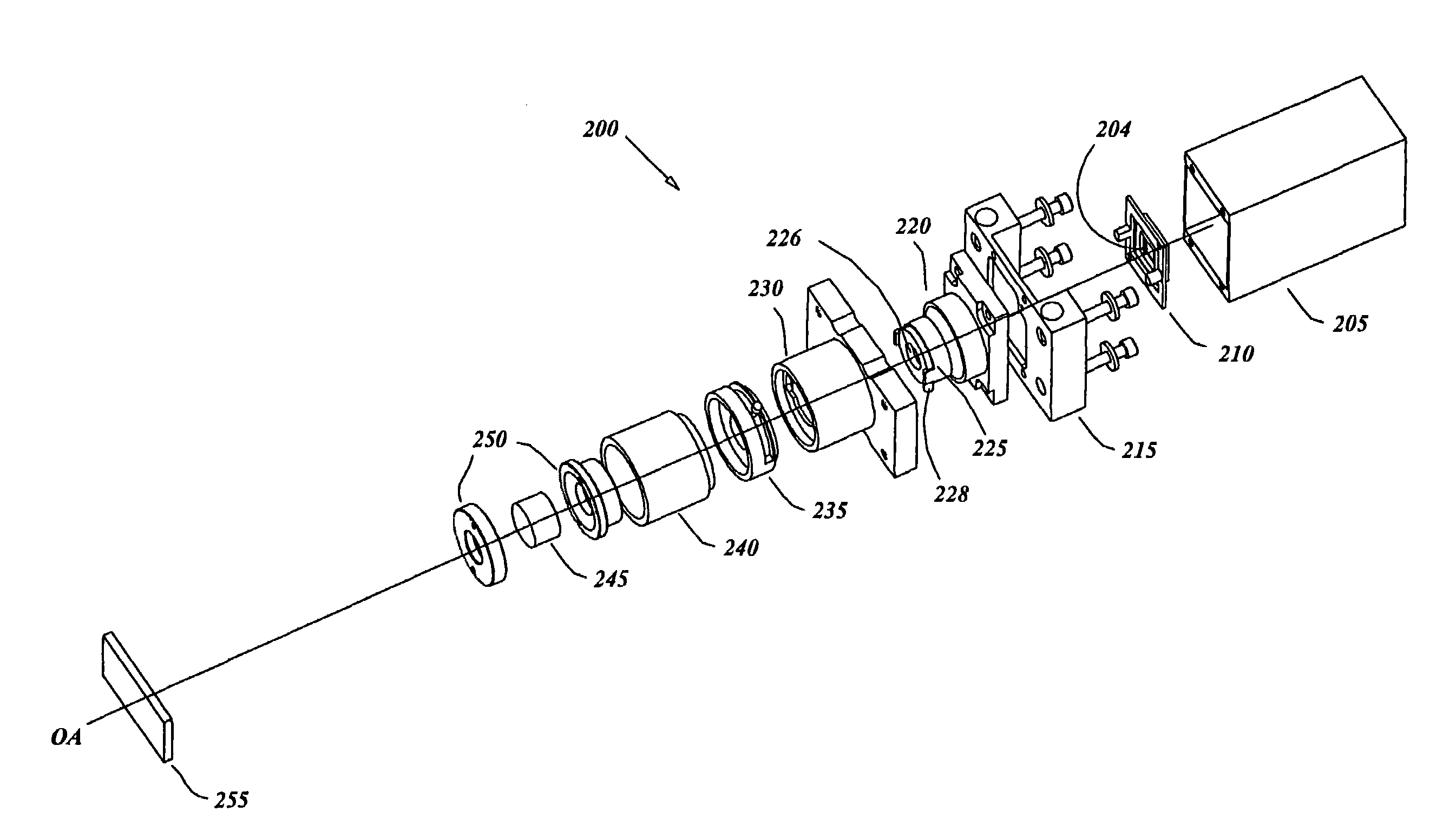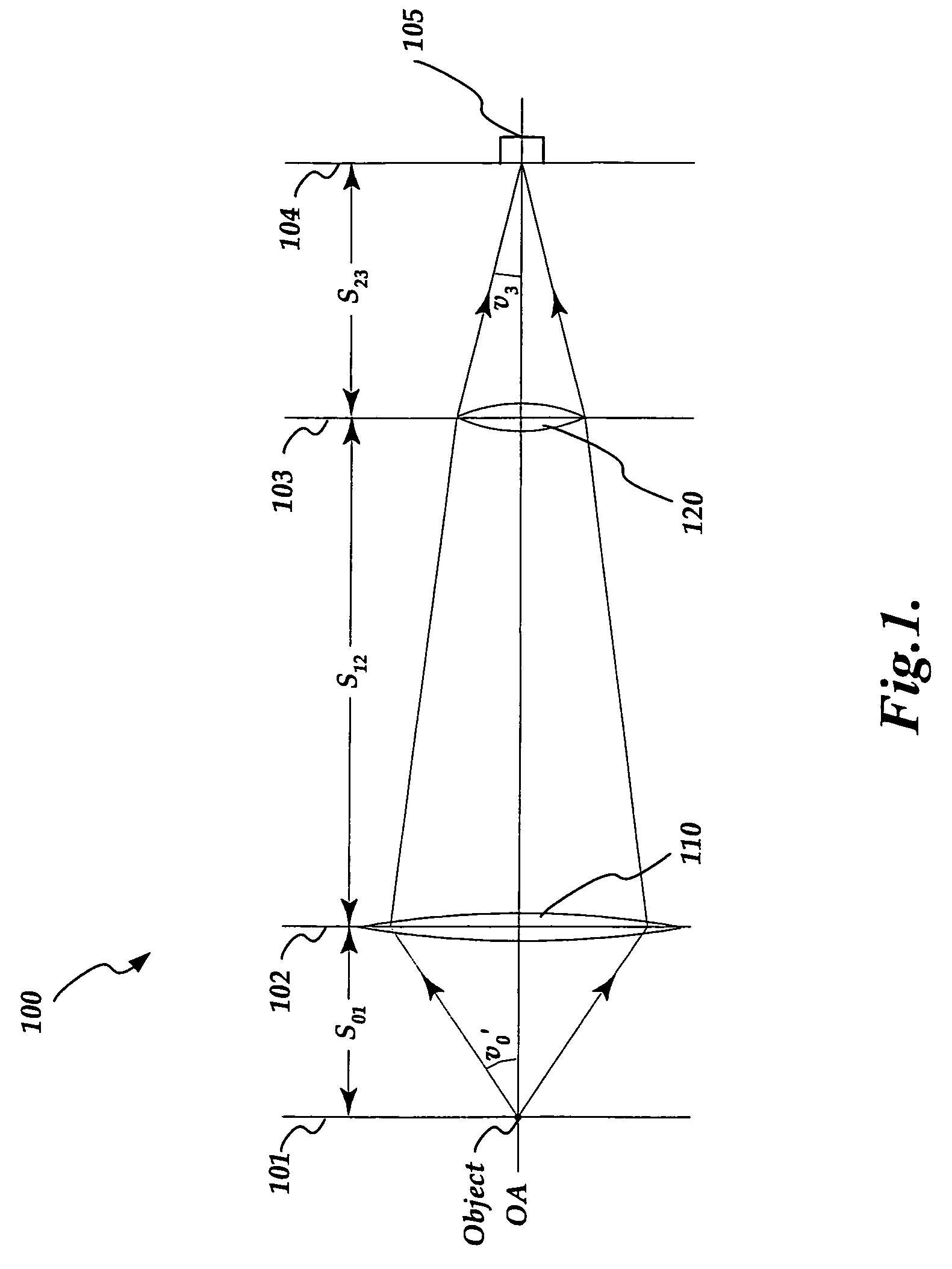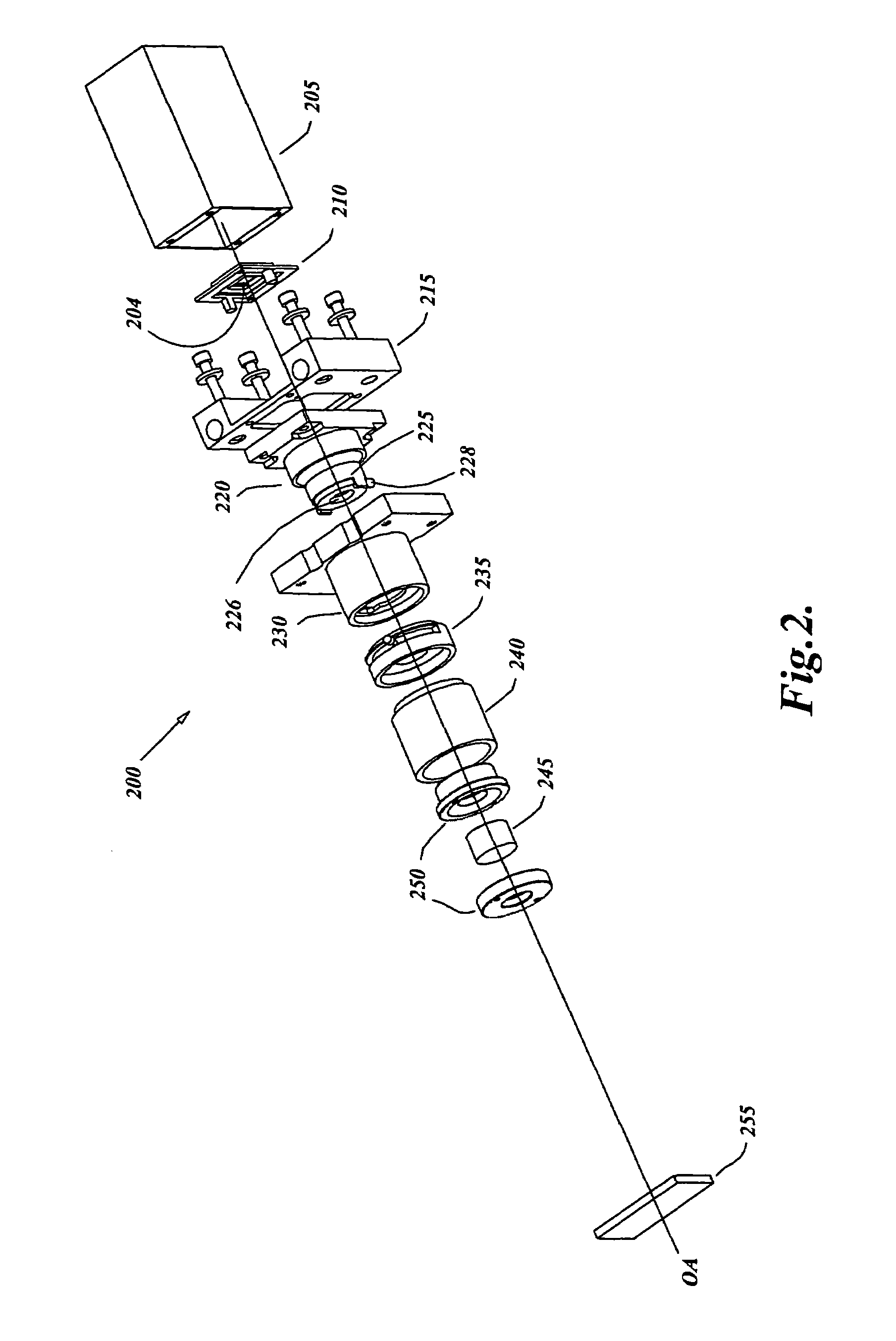Variable focal length constant magnification lens assembly
- Summary
- Abstract
- Description
- Claims
- Application Information
AI Technical Summary
Benefits of technology
Problems solved by technology
Method used
Image
Examples
Embodiment Construction
[0017]FIG. 1 is a diagram showing a paraxial thin lens layout of an exemplary variable focal length lens assembly 100. The variable focal length lens assembly 100 can include a first or objective lens 110 and a second or variable focal length lens (VFLL) 120. Both the objective lens 110 and the variable focal length lens 120 are arranged perpendicularly and radially centered along an optical axis OA. The objective lens 110 has a fixed focal length, while the focal length of the VFLL 120 is capable of being changed. As shown in FIG. 1, an object to be viewed is located in an object focus plane 101 on a front side of the variable focal length assembly 100, and an image detection plane 104 is located on a back side of the variable focal length assembly 100. Further, an image detector 105 can be positioned at the image detection plane 104. The image detector may comprise photographic film, or a photodetector array, or any suitable known-now or later-developed image detecting medium.
[001...
PUM
 Login to View More
Login to View More Abstract
Description
Claims
Application Information
 Login to View More
Login to View More - R&D
- Intellectual Property
- Life Sciences
- Materials
- Tech Scout
- Unparalleled Data Quality
- Higher Quality Content
- 60% Fewer Hallucinations
Browse by: Latest US Patents, China's latest patents, Technical Efficacy Thesaurus, Application Domain, Technology Topic, Popular Technical Reports.
© 2025 PatSnap. All rights reserved.Legal|Privacy policy|Modern Slavery Act Transparency Statement|Sitemap|About US| Contact US: help@patsnap.com



